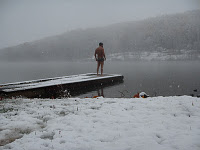 It is often stated that the most difficult pain to push through is cold water – let alone cold water in the middle of the winter! Most people view swimming in a lake or river during the winter as insane, however to many, especially in European countries, it is a part of their lifestyle. A select few actually swim for extended periods of time in the freezing water, which is commonly referred to as an “ice swim”. The definition of an ice swim, according to the International Ice Swimming Association, is 1M (1.6K) in water colder than 41F (5C)! This feat has been achieved by many, and has been pushed to even farther distances by veteran cold water swimmers, such as Lynne Cox (USA), Ram Barkai (South Africa) and Lewis Pugh (UK). My good friend Craig Lenning (first American to swim the North Channel, a.k.a. “King”) describes his 2011 Colorado Ice Swim:
It is often stated that the most difficult pain to push through is cold water – let alone cold water in the middle of the winter! Most people view swimming in a lake or river during the winter as insane, however to many, especially in European countries, it is a part of their lifestyle. A select few actually swim for extended periods of time in the freezing water, which is commonly referred to as an “ice swim”. The definition of an ice swim, according to the International Ice Swimming Association, is 1M (1.6K) in water colder than 41F (5C)! This feat has been achieved by many, and has been pushed to even farther distances by veteran cold water swimmers, such as Lynne Cox (USA), Ram Barkai (South Africa) and Lewis Pugh (UK). My good friend Craig Lenning (first American to swim the North Channel, a.k.a. “King”) describes his 2011 Colorado Ice Swim:
DM: Did you do any special preparations for swimming in such cold water prior to the swim?
CL: Colorado has a lot of natural places you can take ice baths in. I spent every weekend prior to the ice swim swimming in Georgetown Lake and Green Mountain Resevoir. The temps would range from 38 to 47 degrees F. They were also at altitude so it helped in the training. The swims would last from 15 minutes to an hour.
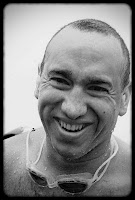 DM: What type of safety precautions did you put into place before, during and after the swim?
DM: What type of safety precautions did you put into place before, during and after the swim?
CL: I had a four person safety crew. Prior to the swim we worked out the general path of the swim, danger areas and hand signals. My swim took place at Brainard Lake Colorado. It is a smaller lake so I needed to complete 2.5 laps to reach the 1 mile mark. My wife wore a down parka to keep it warm for me when I cleared the water, she was also in charge of sending good vibes to me. One of the safety crew wore a wetsuit and walked the shore beside me in case I went hypothermic or had other issues, he was in charge of coming into the water to get me. The lake had a max depth of about 8 feet so if I needed to I could bounce of the bottom or just stand up. Finally the other two wore bright jackets and were positioned on the far side of the lake. They were primarily there to give me something to spot, help me out of the water and to keep me away from a dam that had washed two fisherman down stream earlier in the season. I didn’t really want to take breaks or tread water during the swim so every few strokes I would make a thumbs up with my right hand. The other signals we had were if I was done swimming I would tread/swim towards one of the spotters but they didn’t need to come to me. Lastly my emergency signal of not moving or splashing wildly meant come get me out of the water. We also left the keys to the support truck in a common location in case I needed to be rushed off for medical care. Swimming in cold water is fun, have a good safety plan in place.
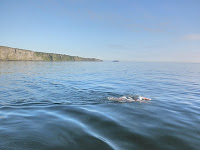 DM: What would you recommend to a swimmer who is looking to tackle their first ice swim?
DM: What would you recommend to a swimmer who is looking to tackle their first ice swim?
CL: I think the ice swim is an excellent goal to go for. If you want to make the swim official visithttps://www.internationaliceswimming.com/rules to review the guidelines. I highly recommend doing ice baths or sitting in cold water to see how your body reacts to cold water. With training you can learn your limits such as when hypothermia starts to come on (blue lips, slurred speach and shivering). Learning how to control your breathing and staying calm is a must. Finally you need to learn how to recover and rewarm your body.
THANKS CRAIG!
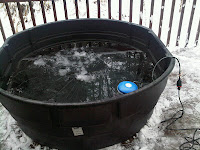
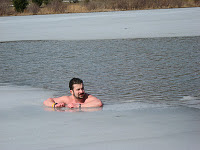 I get asked all the time why I would chose to expose myself to such punishment. Personally, I train in cold water for the specific purpose of developing the mental “hardiness” that comes along with learning to push through any kind of pain. Training of this type is what allows you to understand how to push through very difficult conditions, such as those obstacles associated with being in the middle of an ocean. Through difficult tasks, we are able to experience life in a whole new light. The tougher the challenge, the tougher we become. Plain and simple. Ice swimming is about the most brutal form of challege there is, therefore, my question is, “Why wouldn’t I want to experience the feeling?” Never be afraid of a challenge, because through pain, we are able to experience life…
I get asked all the time why I would chose to expose myself to such punishment. Personally, I train in cold water for the specific purpose of developing the mental “hardiness” that comes along with learning to push through any kind of pain. Training of this type is what allows you to understand how to push through very difficult conditions, such as those obstacles associated with being in the middle of an ocean. Through difficult tasks, we are able to experience life in a whole new light. The tougher the challenge, the tougher we become. Plain and simple. Ice swimming is about the most brutal form of challege there is, therefore, my question is, “Why wouldn’t I want to experience the feeling?” Never be afraid of a challenge, because through pain, we are able to experience life…
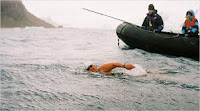 Pictures:
Pictures:
(Top) Late 2011 training session at Keystone State Park
(Upper-Middle) American Marathon Swimmer, Craig Lenning/Craig swimming the North Channel, July 2011.
(Lower-Middle) Early 2011 training session at Keystone State Park/My “cold tub” at home
(Bottom) Veteran Marathon Swimming Legend, Lynne Cox
